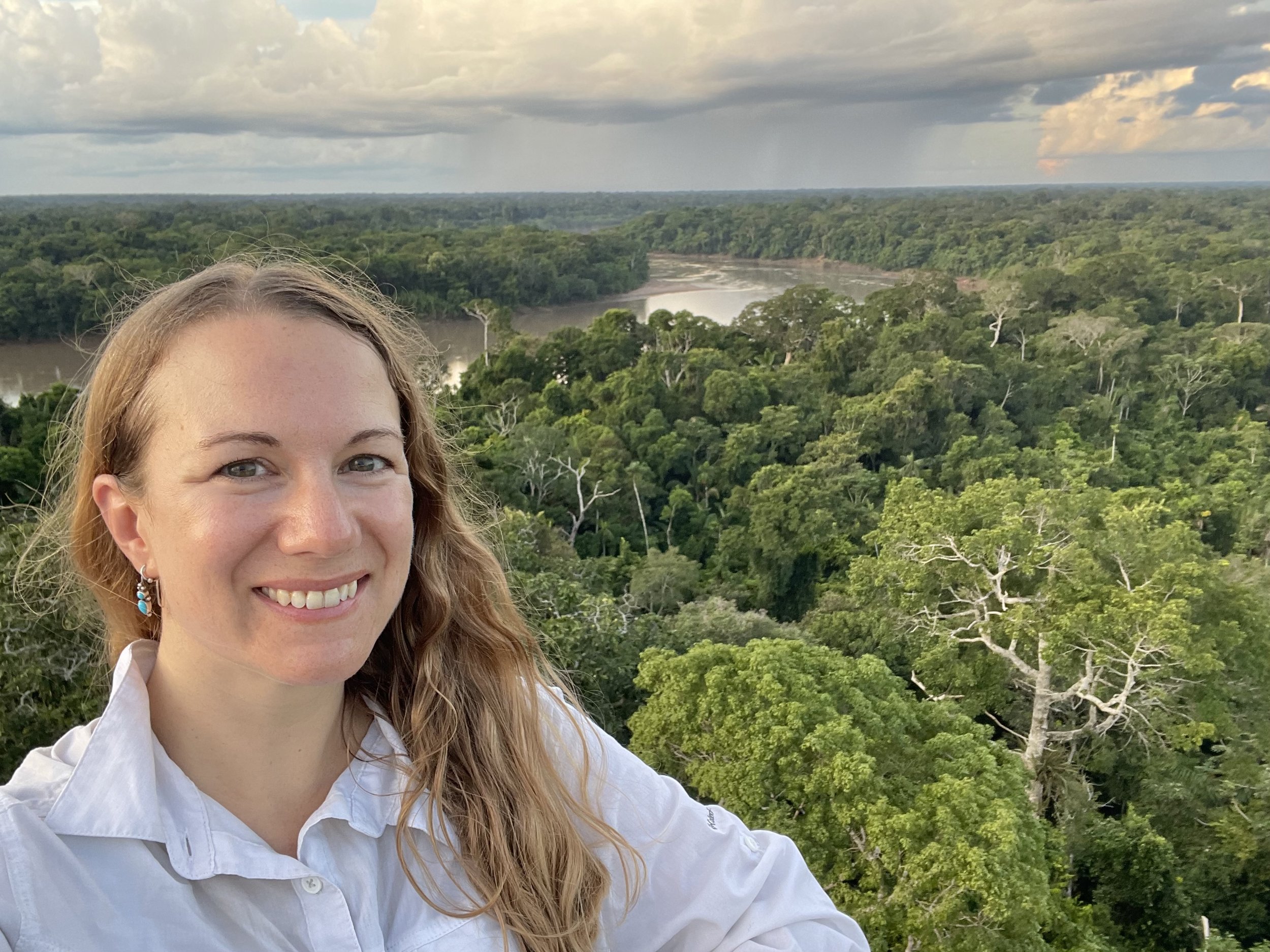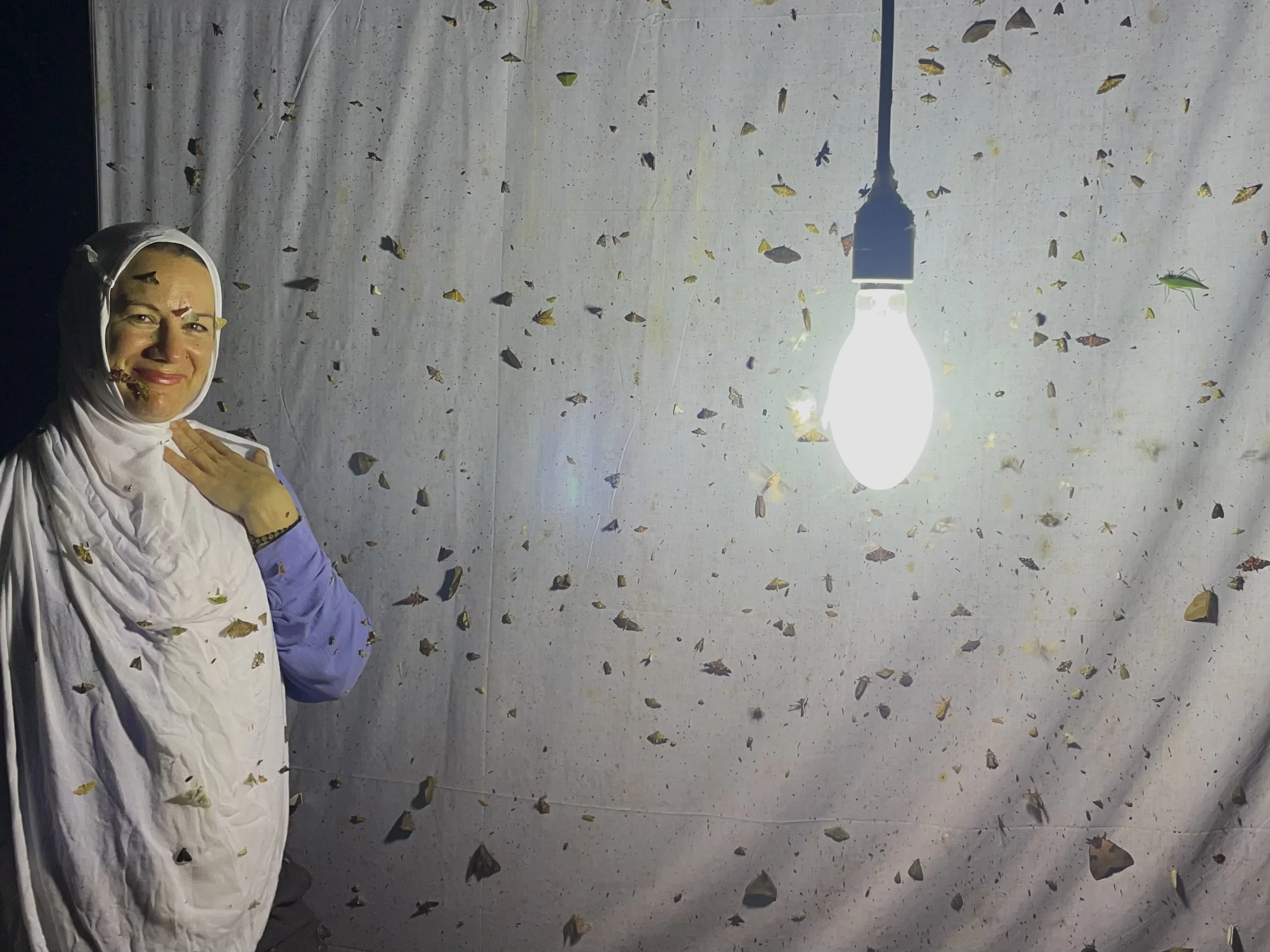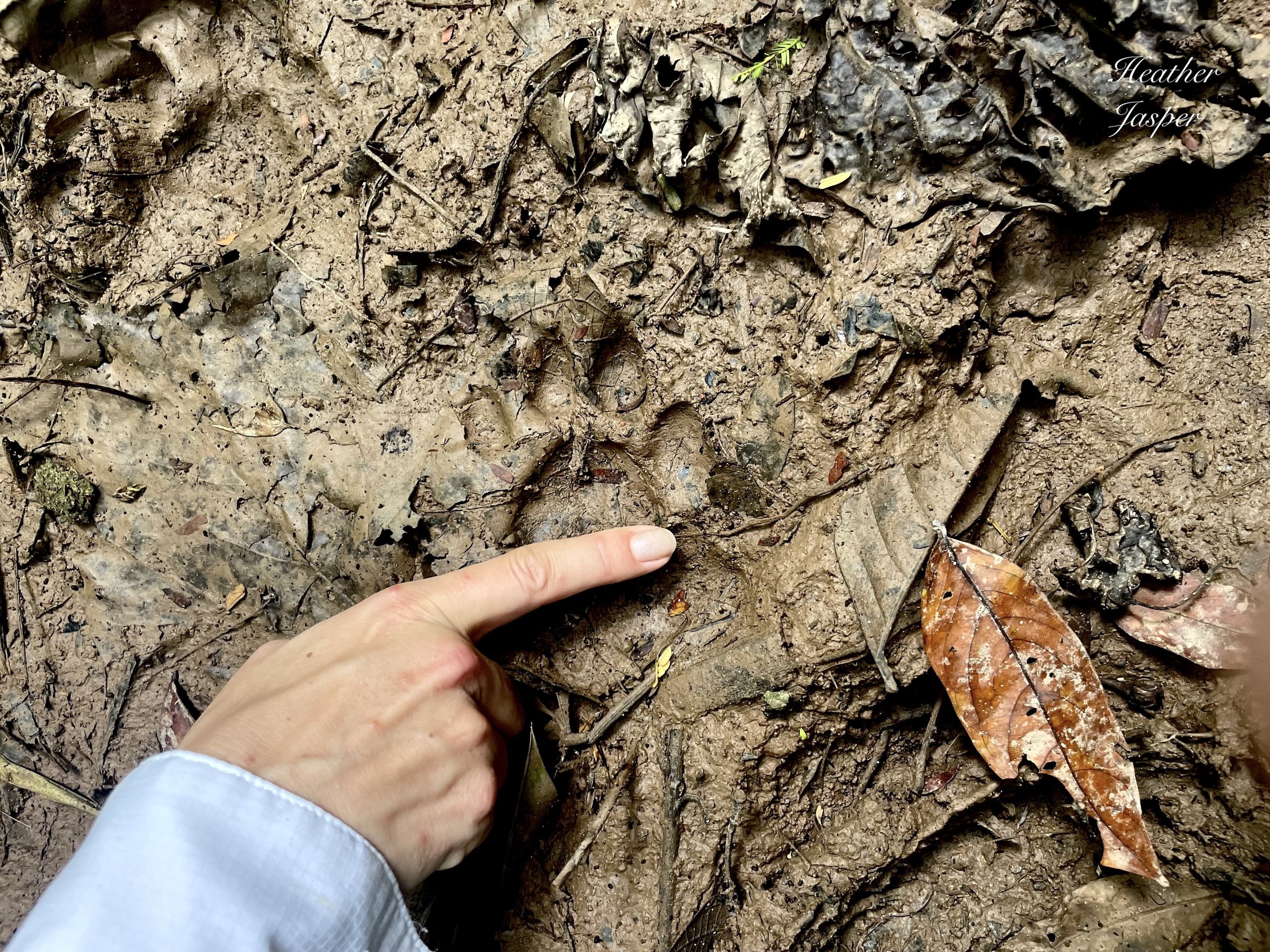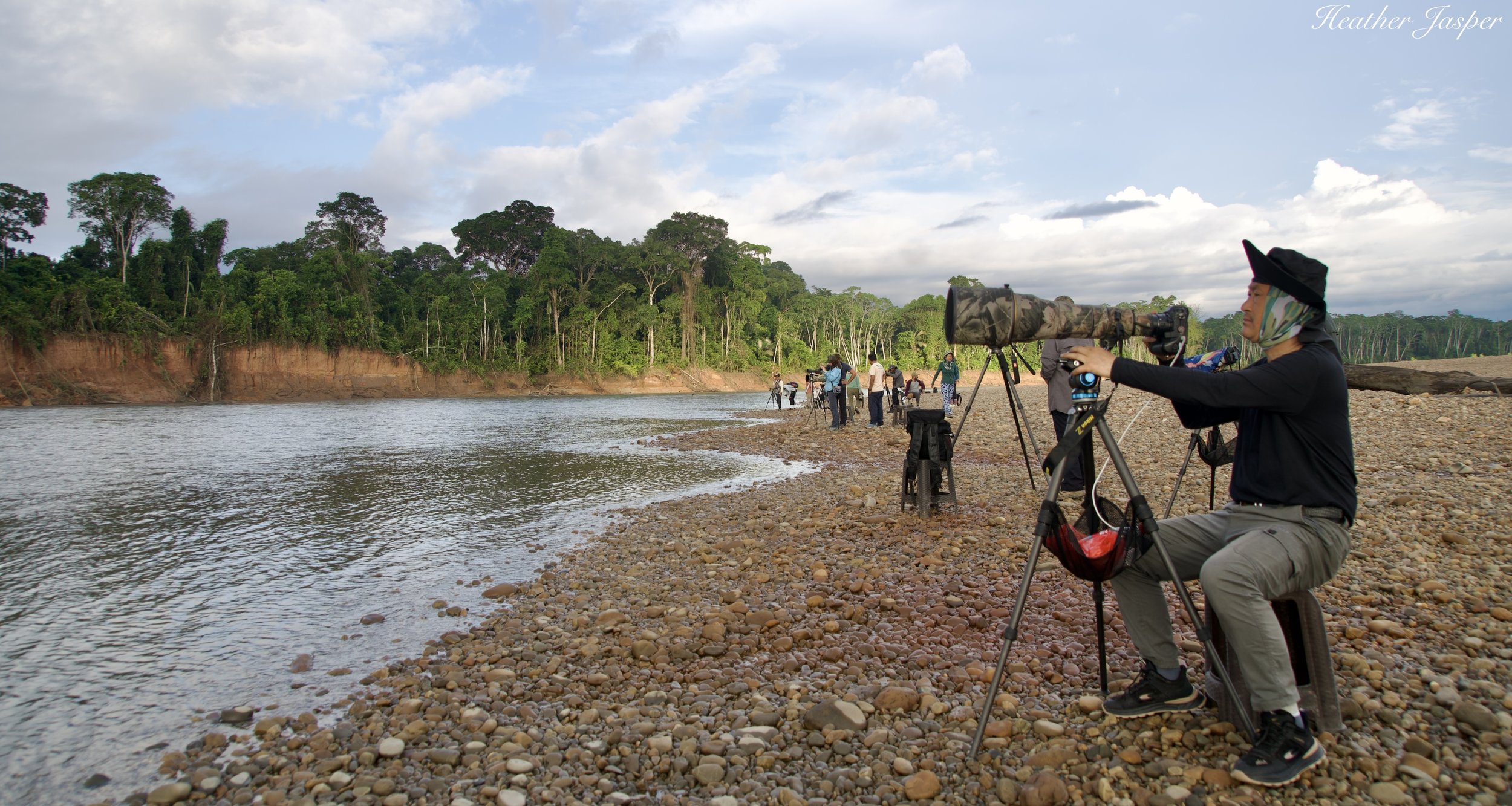Travel Tip 43
How to pack for the jungle?
Here’s my top jungle packing tips!
The Peruvian Amazon is the most underrated part of Peru, which is probably why most Peru packing lists tell you what to take for treks at high altitude. Send this to anybody you know who’s headed to the jungle!
Whether you’re going to the jungle in Peru, Borneo, or Rwanda, I’ve got you covered.
I joined a group of scientists recording monkey calls in the forest one afternoon, so I wore white to protect from the evening mosquitoes.
Jungle clothes
You want light weight fabrics that will protect you from insects and sun. Long pants and long sleeves are your best protection from both mosquitoes and tropical sun. I take sunscreen and bug repellant but usually sweat them off within minutes of starting a hike.
You want pants that have some elastic around the bottom so they can fit tightly around the top of your shoes or so they stay in place when you stick your feet in rubber boots. You don’t want to invite anything in the jungle to crawl up your leg.
Take mostly light colors, because if bugs land on you, they’re easy to spot. Mosquitoes tend to avoid light places and light-colored clothing. However, if you’re going birding don’t wear white. Try to find unobtrusive light green and tan colors to not scare off the birds.
Wear dark colors at night
If you want moths to land on you, which I did, then go ahead and drape yourself in white.
Also take at least one long sleeve, dark shirt for night walks. Daytime bugs may avoid light colors but at night moths love light. Especially if you plan to do any activities with moths, have a dark shirt so they don’t gather on you.
Rainforest = rain = mud
Be careful when you’re tromping through muddy trails! I almost stepped on this puma track. (Note my hand is covered with bug bites).
Tall & hefty hiking boots
Though tropical rainforests are so hot I always want to walk around barefoot, I take my tallest hiking boots. I have one pair that has three sets of hooked eyelets that go up almost two inches above my ankle. That’s both to protect my ankle from sharp things and so I can fasten the elastic bottoms of my pant legs around the boot top.
It’s amazing how many sharp things grow in the rainforest. The number of palm trees that grow long spikes and the number of other plants with thorns amazes me. You want a thick sole in case you step on something sharp.
Sharp plants aren’t the only reason to protect your feet and ankles. If you accidentally step on, or scare, a snake, it’s likely to rear up and bite you below the knee. Many jungle lodges have knee-high rubber boots for all guests. They’re loose around the shin and calf so if a snake bites them, they only hit rubber and miss your leg entirely.
Tall boots are good for bugs too
This wandering spider is less likely to grab on to a passing smooth rubber boot than a passing pant leg. Though TBH spiders like this won’t move if they sense big things like people nearby. It’s ants that crawl up pant legs.
A visit to the jungle doesn’t mean you’ll always be under the canopy. Sometimes you really need a sun hat.
Hats & bandanas or buffs
Hats are for sun, but also to protect your head from falling things in the jungle. Leaves fall, spiders drop from branches and in Borneo, so do leeches. Under a thick canopy, or at night, you don’t need a hat for sun, but I suggest covering your head to protect from bugs. It’s never happened to me, but I hear sometimes monkeys throw shit at people and you don’t need that in your hair. Keep your head covered.
Most bugs hold still
This giant mantis wasn’t interested in me at all. It patiently held still as I got several photos and video.
Insect repellant
First, accept that in the jungle, there are a lot of bugs. You will get bugs on you and need to be able to ignore them or brush them off without making such a ruckus that you scare off the animals that you’re trying to see.
However, you don’t want to get bit by mosquitoes and any bit of skin that isn’t covered with clothes should probably have insect repellant. Deet is terrible for your health, but so is malaria, so consider what risks you’re willing to take before booking a jungle trip. (Also get travel insurance).
The best way to travel through the rainforest is by boat, so be prepared to spend time on the water too.
Medications
Tropical rainforests have all kinds of diseases. Always go to a travel clinic at home before you leave for your trip. I recommend a travel clinic over your regular doctor unless you know that your GP is an expert in tropical diseases. Get a list of medications to take that’s tailored to your trip.
Be sure to tell the doctor exactly where you’ll be traveling, as diseases like malaria aren’t present everywhere in every country that has malaria. Even in Peru, diseases in the north near Iquitos and in the south near Puerto Maldonado aren’t the same. Be specific about where you’ll be and make sure the doctor has current information about the risks at your destination, at the time of year you’ll be there. Some mosquito-borne diseases, like dengue, are a risk only a few months of the year.
I prefer flashlights over headlamps because it’s easier to position a flashlight on one side of a frog and my phone on the other for a close up portrait. The straps on headlamps move too much and scare frogs away.
Gadgets
The most important is a flashlight. Being close to the equator, it will likely get dark an hour or two before dinner and you want a light with you. Some people prefer headlamps but I prefer a flashlight in my hand because I get annoyed when moths fly at my face to get near my headlamp.
There are many great apps for identifying birds and other wildlife. If you want to know what you’re seeing, make sure you download all the apps before you leave home. Don’t assume all jungle lodges have wifi.
I’m not actually a fan of gadgets and carry almost none. However, do check the water situation at the place you’ll be staying. I highly recommend a water bottle that has a filter built in so you can always drink tap water and not buy disposable plastic bottles.
Want peace of mind on your trip? Get travel insurance! (Photo at the Tambopata Research Center).
Travel insurance
You should have travel insurance for any trip but especially for a jungle trip! I use SafetyWing, which is the most flexible travel insurance I’ve ever had in the past 20 years. (If you use my affiliate link, I may get a small kickback at no extra cost to you).
Blog
This was a truly outstanding lodge. I’ve stayed in about a dozen jungle lodges so far and loved this one for the wildlife, the design of the lodge, the food, and my suite. This is the second in a three-part series of my trip with Rainforest Expeditions to their three lodges along the Tambopata River in southern Peru..
If you’re lost in the jungle, you can eat this! Crack open the pod and eat the white fruit but spit out the seeds. It’s cacao and the seeds need to be fermented and roasted before you can make chocolate with them.
Article
Mother and three children survive 34 days in Peruvian jungle
I usually give you a link to one of my articles, but this story has stuck with me since it happened in 2020. After 34 days lost in the forest, I’ve been wondering the past four years what that mother would recommend for a packing list in the jungle. Also, they were rescued by a hovercraft! How cool is that?












